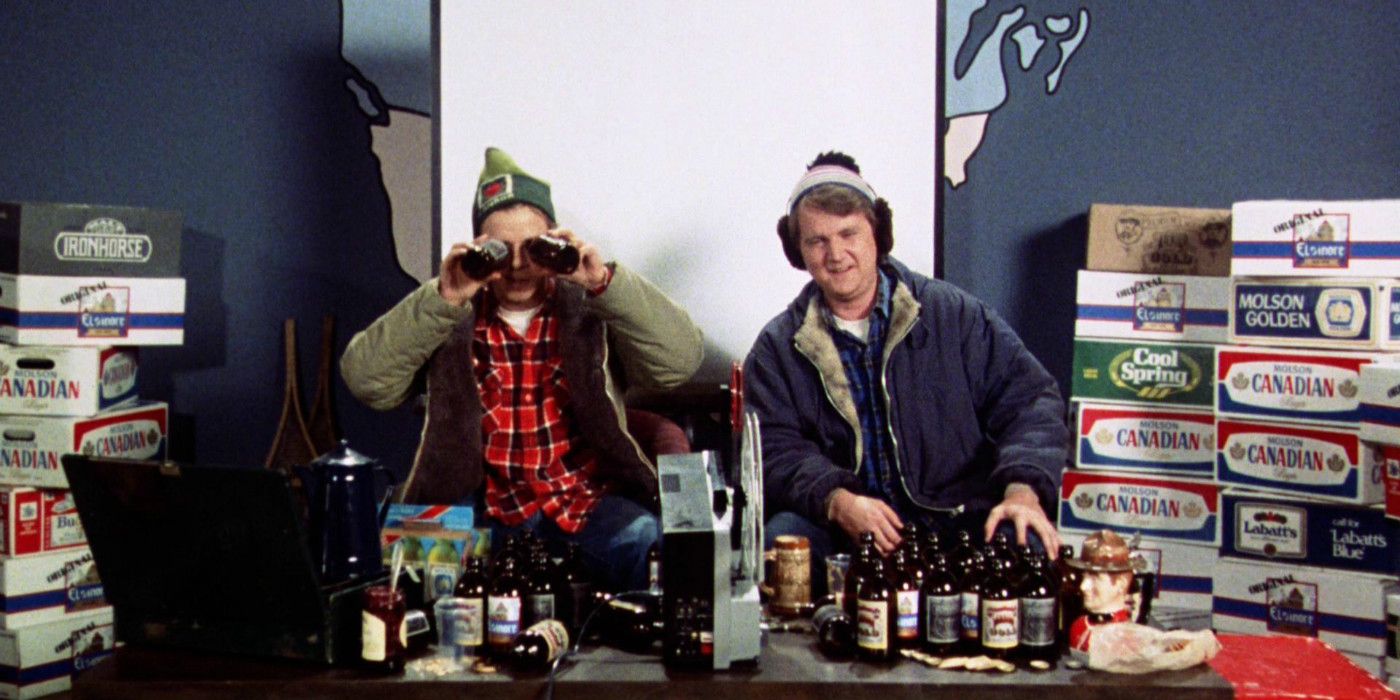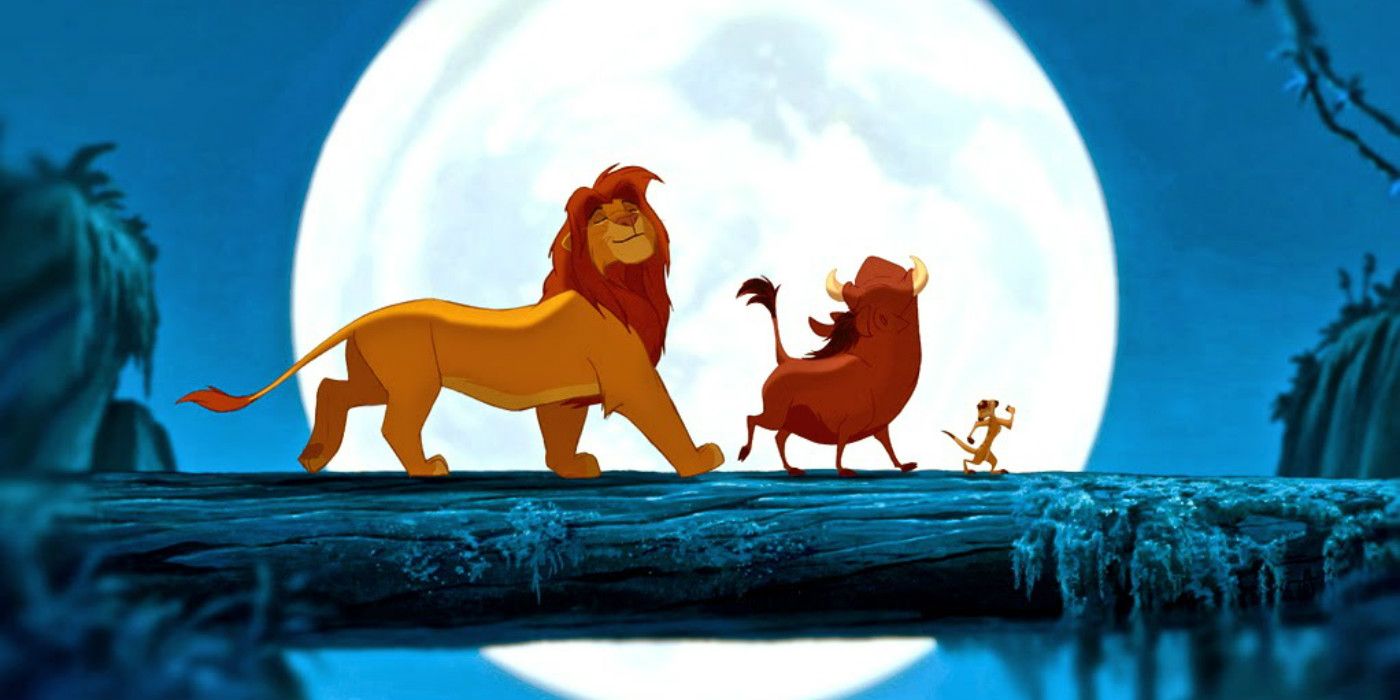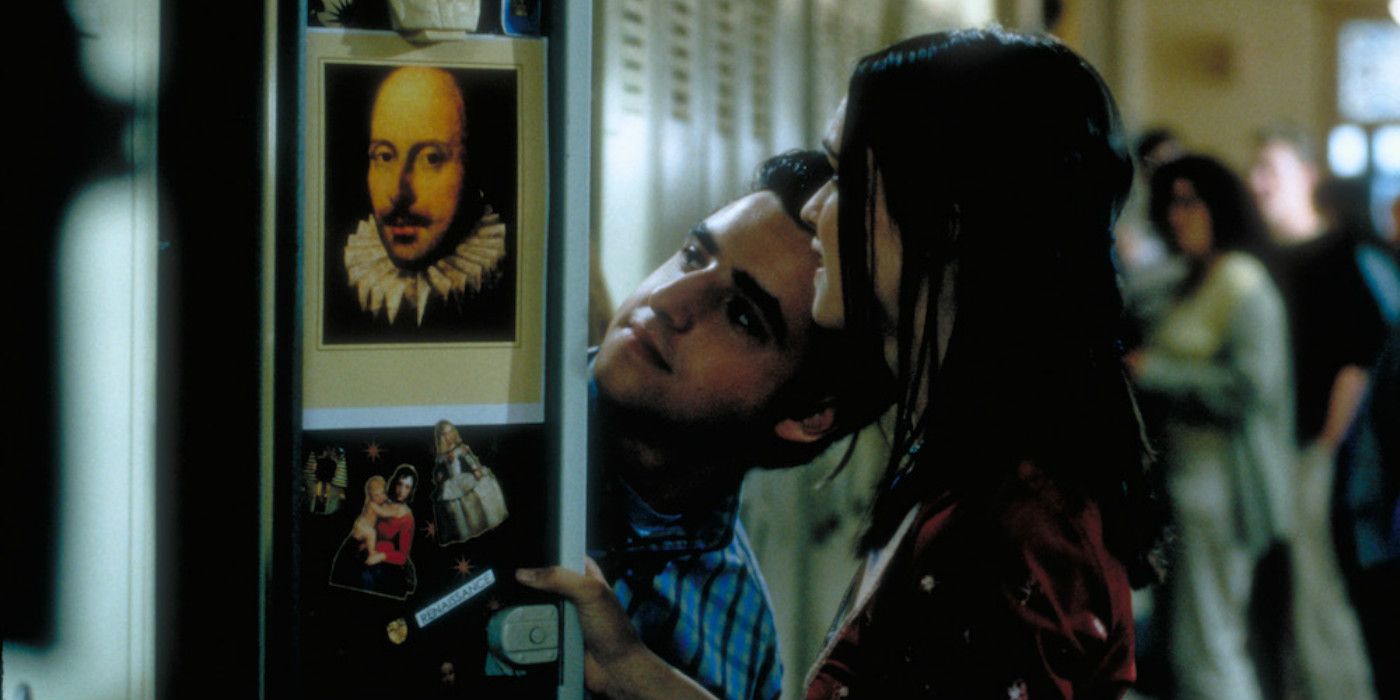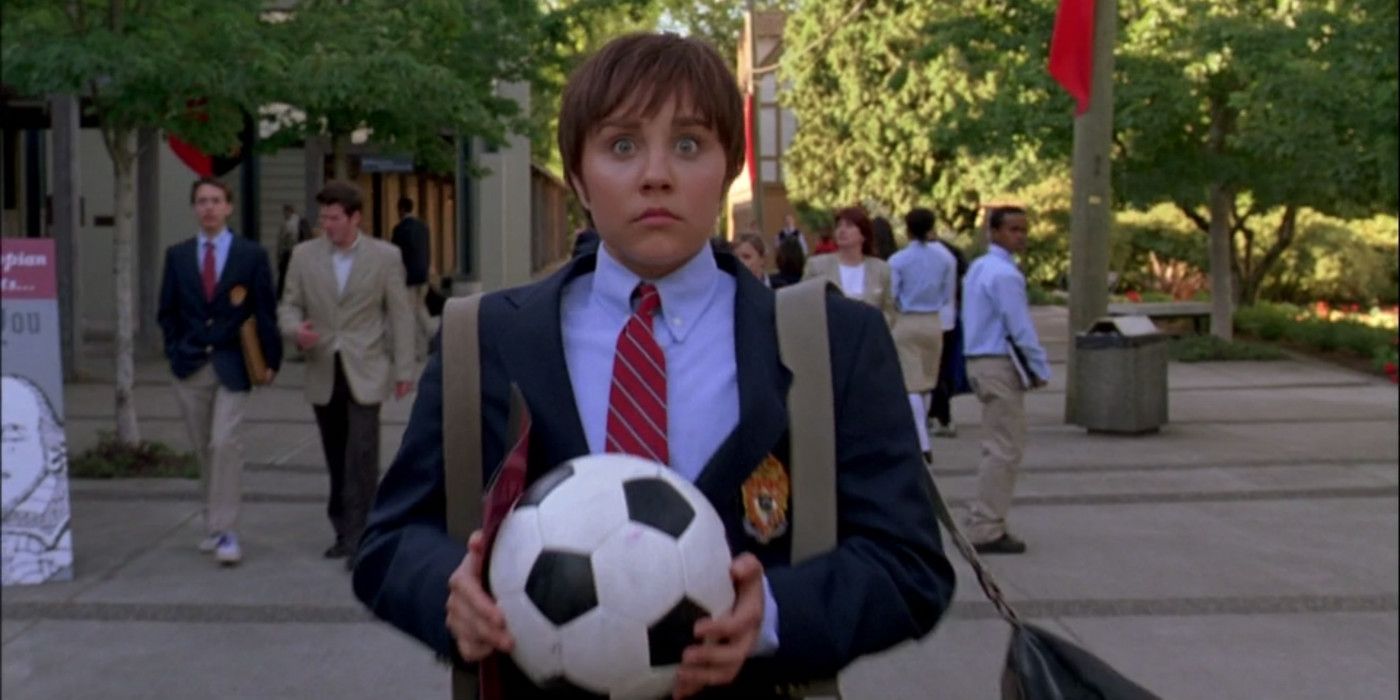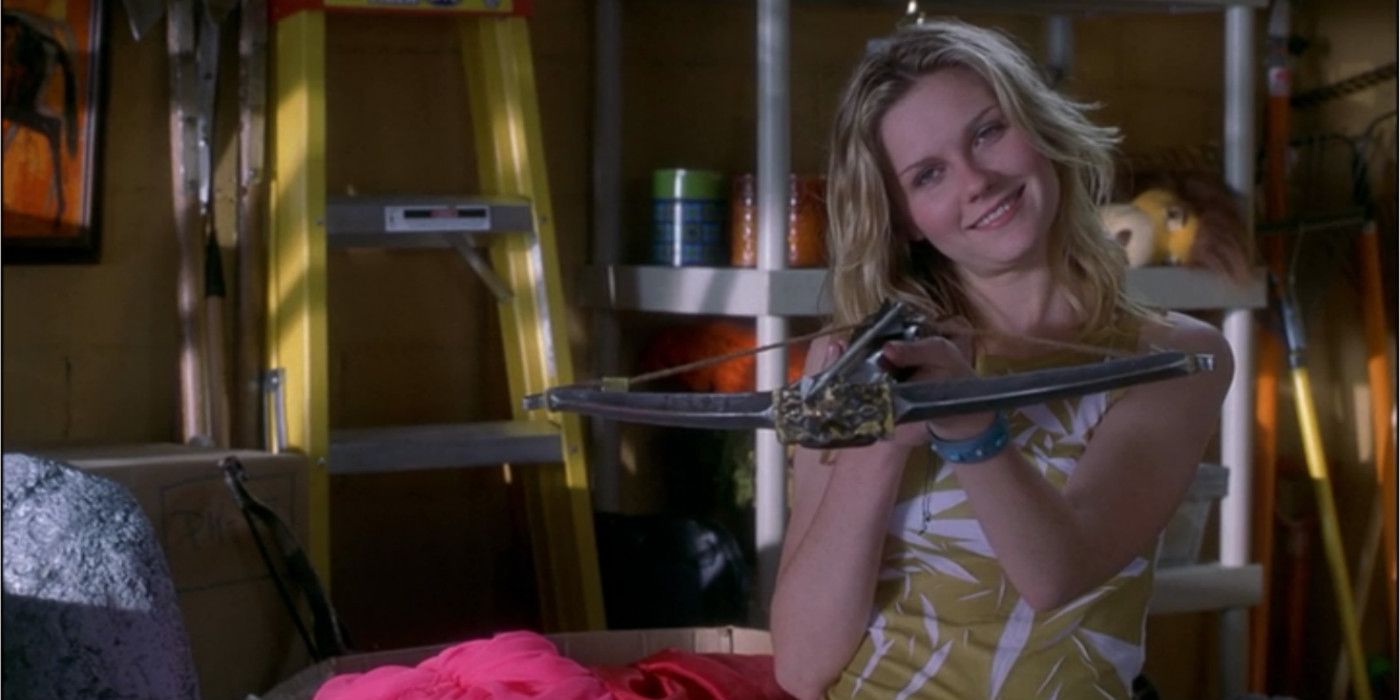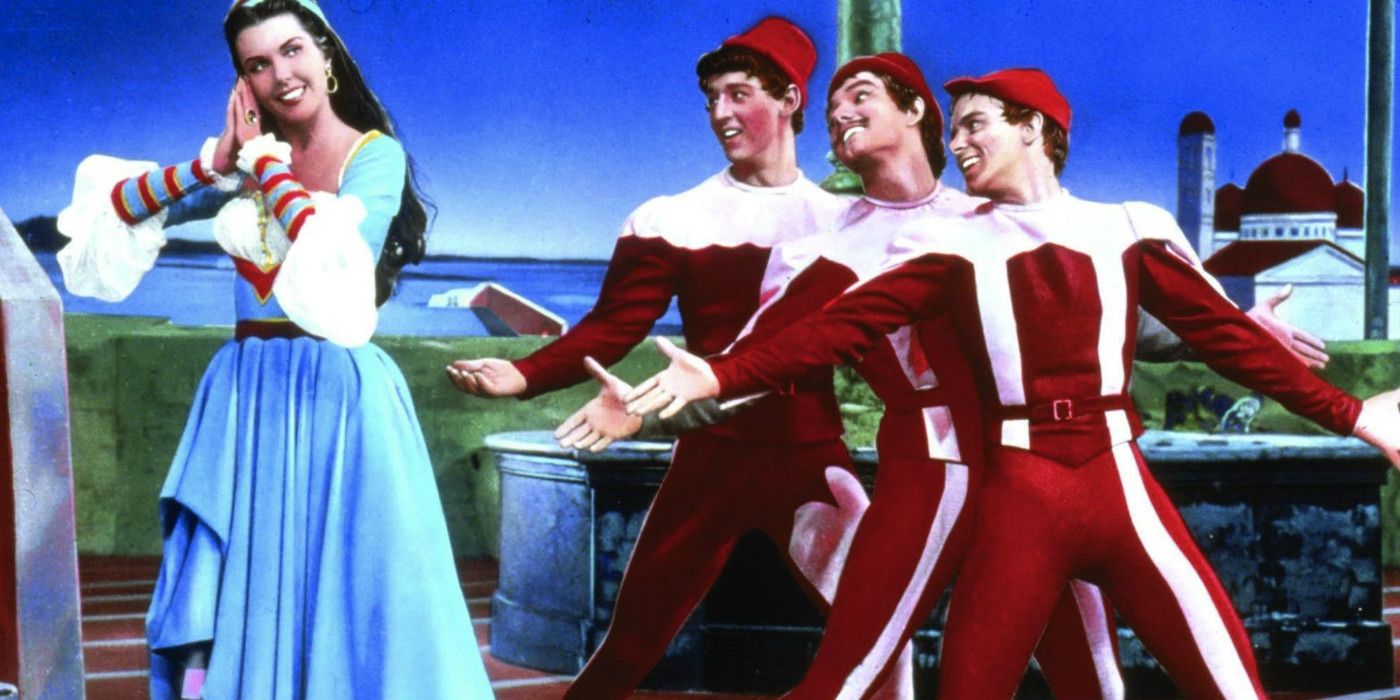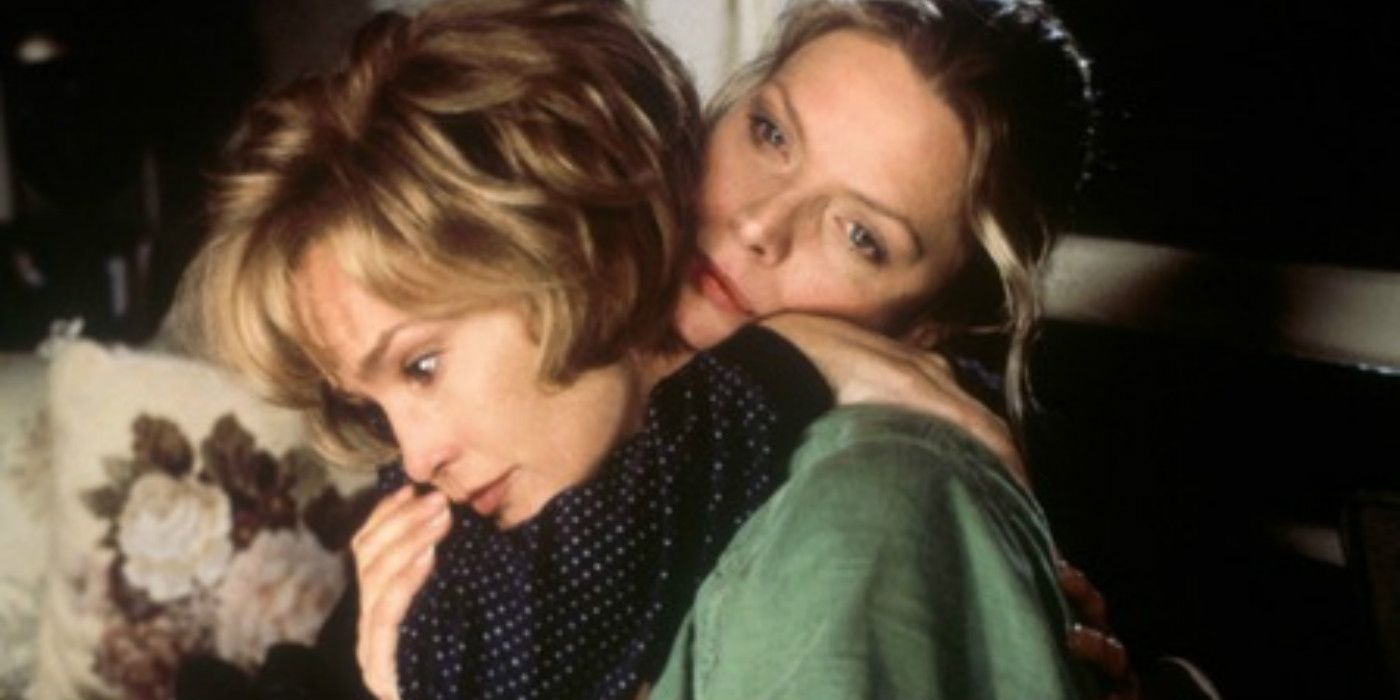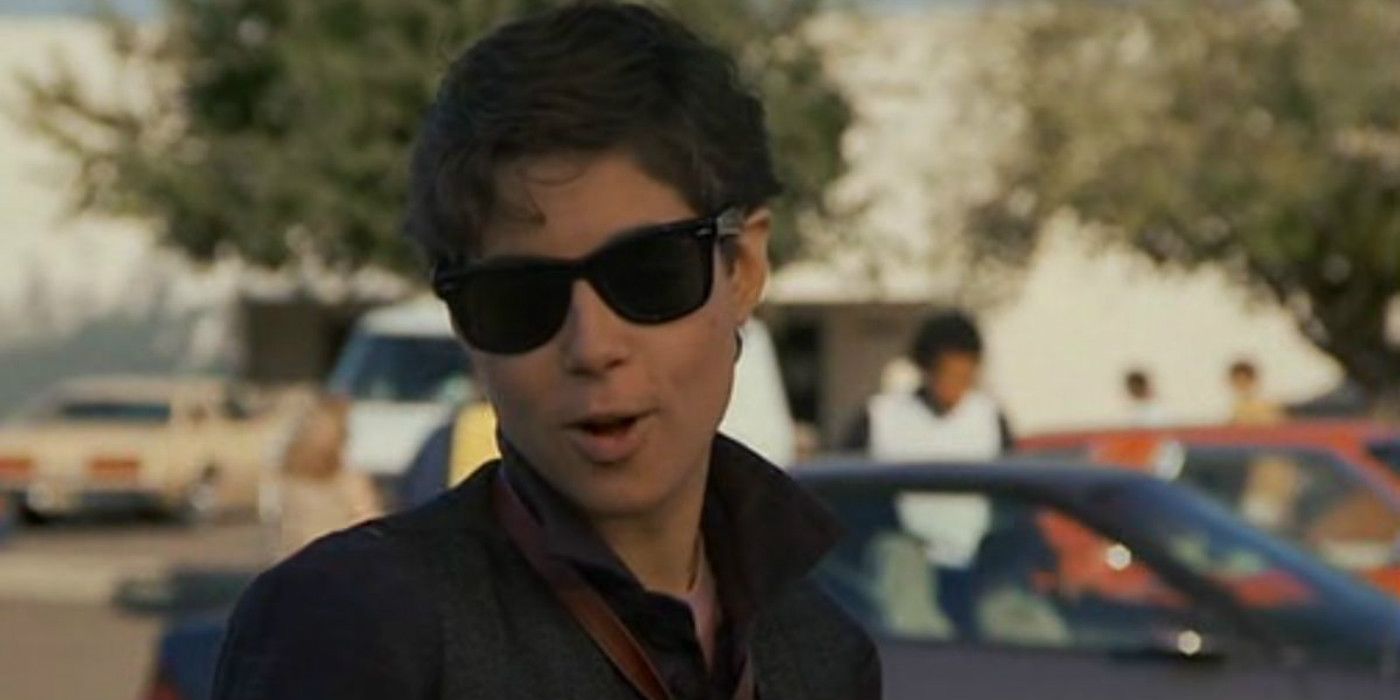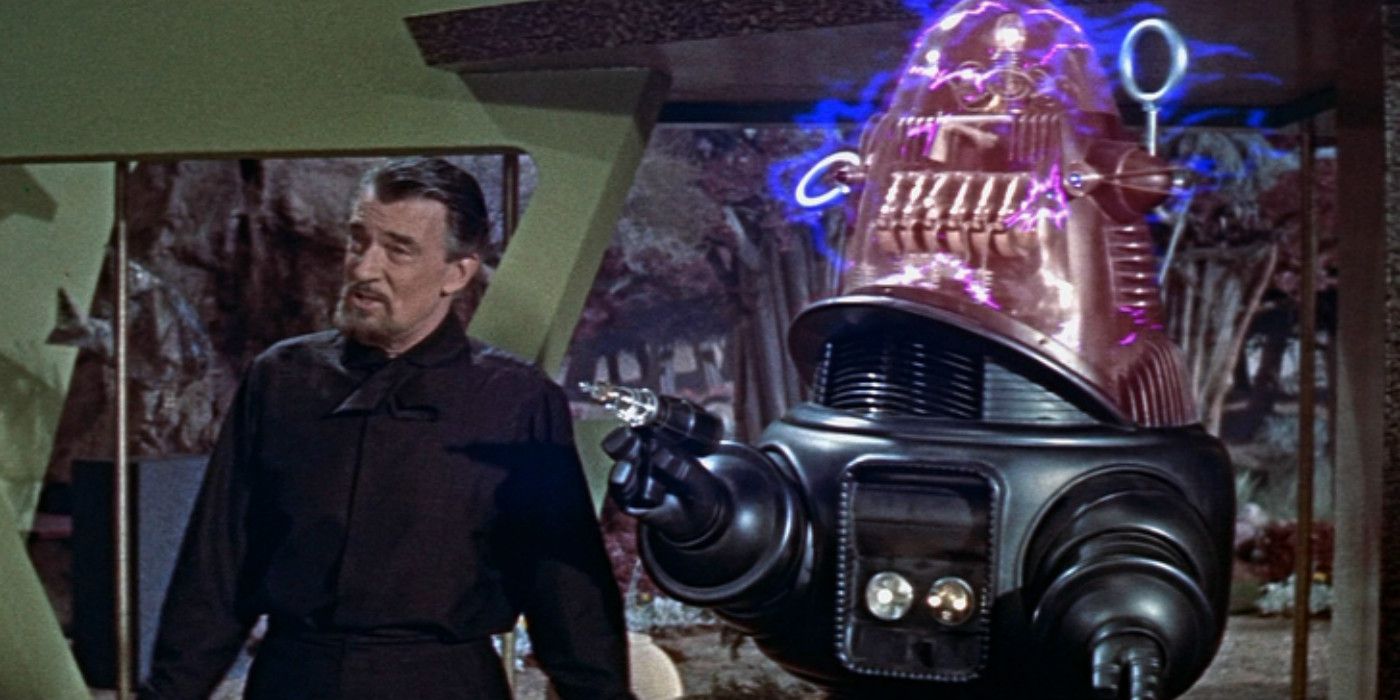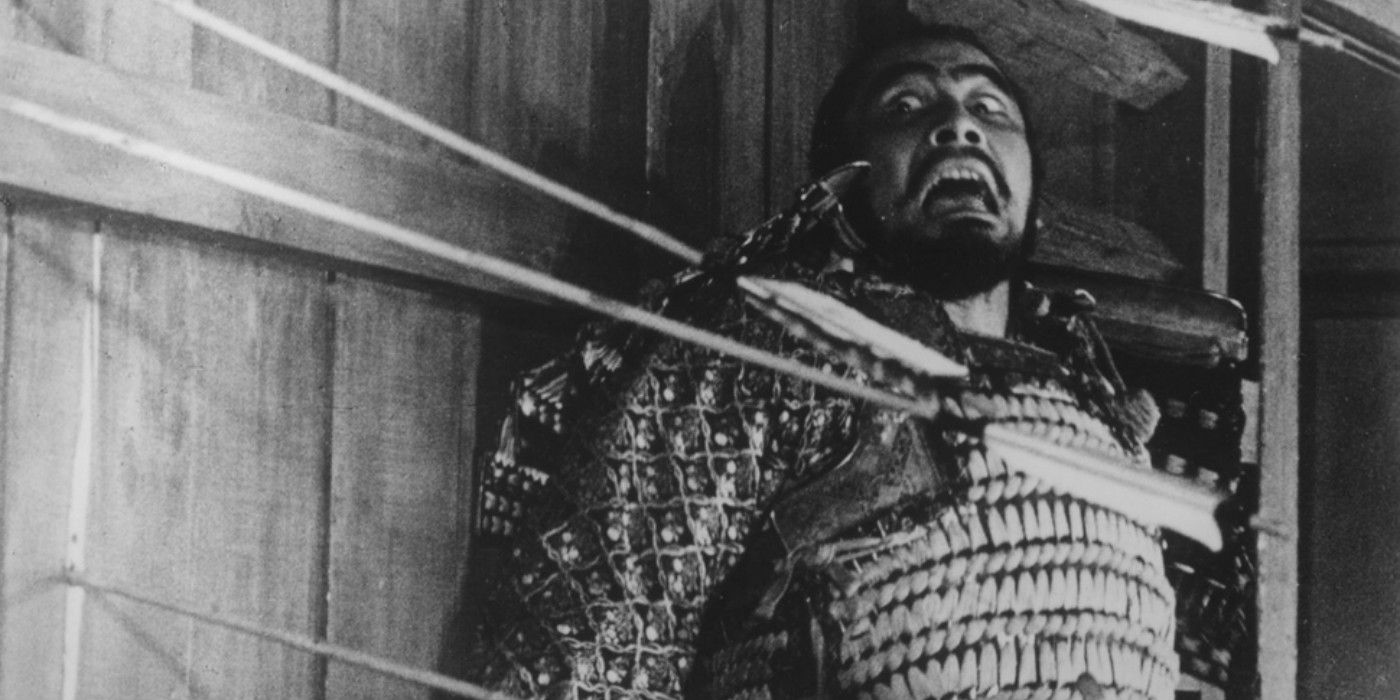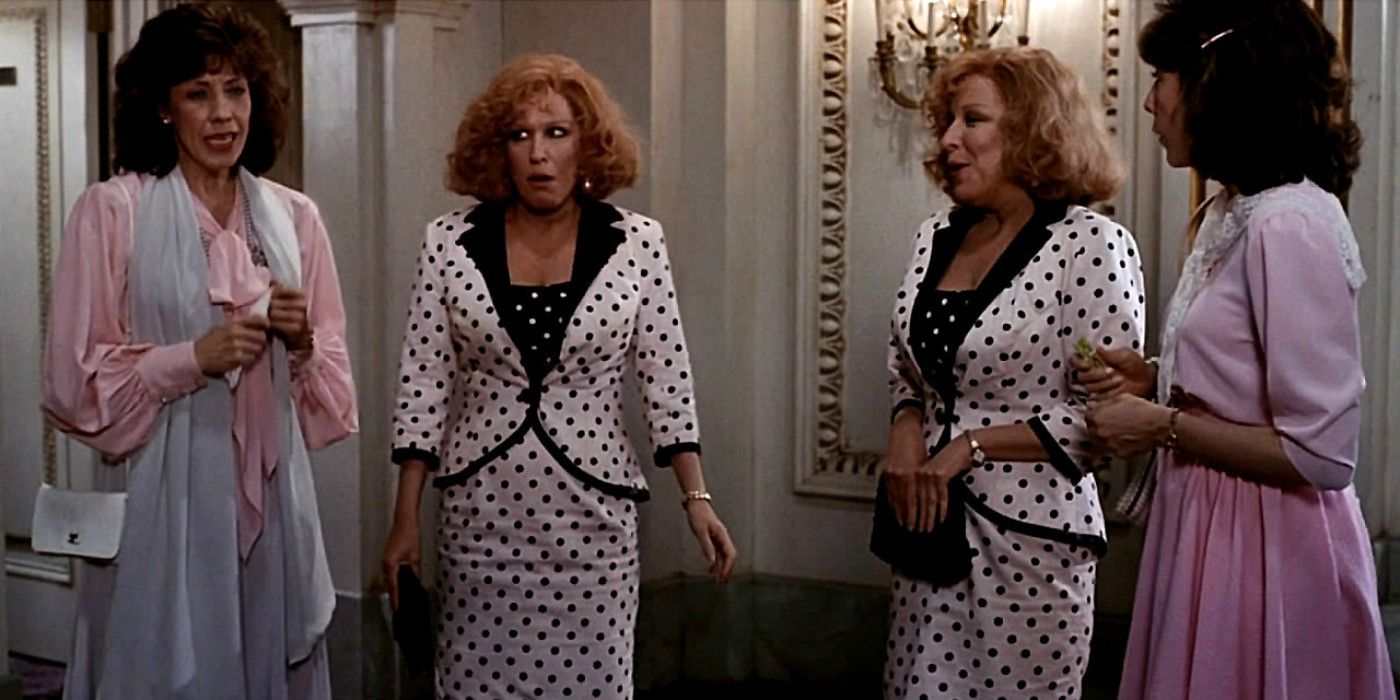Part of what makes Shakespeare’s plays so powerful is their timelessness. They are so timeless, in fact, that they can be set pretty much anywhere, from the middle ages, to space, to (frequently) a high school in the 1990s. This versatility is what makes them so easy to recreate in film: when the classic tales feature different settings and character names, with minor plot changes, they become virtually unrecognizable. So many Shakespearean stories have been altered and repeated so many times throughout cinematic history that it's easy to forget that they were even pieces of classic literature in the first place.
We may already have an article about movies you didn’t know where based on books, but there are so many based on Shakespeare that we thought they deserved their own list. Are you surprised that some of your favorite movies aren’t as original as you thought?
Here are 15 Movies You Didn't Know Were Based On Shakespeare.
15. The Lion King (1994)
If you loved Lion King growing up, you unknowingly learned most of the story of Shakespeare’s Hamlet. In both tales, a good king is murdered by his evil brother, who soon becomes king in his place. The sons, Hamlet and Simba, see their fathers reappear as ghosts, who tell them to become king. The uncle, suspicious of the son’s behavior, sends him away along with a pair of old friends. Timon and Pumbaa are sort of a combination of Rosencrantz, Guildenstern, and Horatio from the play: although they are goofy, they are also trustworthy and great advisors to Simba. The son eventually returns home and fights the uncle, killing him.
However, there are major differences between the stories. Most notably, in Hamlet, pretty much everyone dies; because The Lion King is a Disney movie, only Scar winds up dead. Moreover, while Nala serves as Ophelia’s counterpart, there are no animated counterparts for her brother Laertes or father Polonius. Finally, Simba remains relatively happy throughout his journey, while Hamlet is depressed and mad for much of the story.
14. 10 Things I Hate About You (1999)
Even seemingly mindless teen movies can be inspired by age-old tales. Kat is loosely based off of Katherina, a “shrewish” woman who agrees to marry Petruchio, represented by Patrick Verona in the movie. In the play, the two are married right away, and the “taming” occurs after their wedding. Patrick is a lot more charming than Petruchio: Petruchio is very mean to Katherina, and manipulates her until she agrees with everything he says, even when it is absurd. A romantic serenade and thoughtful musical gift definitely seem like slightly better ways of wooing a woman.
Similarities and differences also occur within the other storyline centered around Bianca. In the play, her (many) suitors continuously wear disguises in order to confuse her. There is a character named Tranio, who is the assistant of Gremio (aka Joey), and disguises himself as Lucentio (aka Cameron) in order to marry Bianca. His plan fails, however, because Bianca elopes with the real Lucentio instead. Horentio, another suitor represented by Michael in the film, ends up marrying a wealthy widow. By the end of the play, the three husbands all have a lovely argument about whose wife is most obedient, with Petruchio’s “shrew” winning. Basically, 10 Things I Hate About You is a portrayal of The Taming of the Shrew with less sexism and a lot less marriage.
13. She’s the Man (2006)
There are a lot more teen-oriented movies based off Shakespearean plays than one would think! She’s the Man is based off of Twelfth Night, a play centered around twins named Sebastian and Viola, who are separated by a shipwreck. Aside from the shipwreck, the movie follows the play with extreme accuracy, aside for the time period difference. Even the names are the same: Viola’s love interest in the film, “her” roommate Duke, holds the title of Duke in the play. Similarly, the boarding school in which the movie takes place is called Illyria, which is the island that Viola lands on after the shipwreck. One of the major differences between the play and the movie, other than the time difference, is that Viola does not assume her brother’s name in the play. Instead, she goes by the name ‘Cesario’. Moreover, the play ends not with the comedic gender reveal of She’s the Man, but with marriage proposals. That’s Shakespeare for you.
12. West Side Story (1961)
West Side Story tells the tale of two ill-fated lovers, brought down by the feud between their rival gangs. Sound familiar? The film and musical are based off Shakespeare’s most famous tragedy, Romeo and Juliet. Many of the characters of West Side Story are based directly on characters from Romeo and Juliet: for example, Tony’s friend Riff is quick-tempered and humorous, like Mercutio, and Baby John is his best friend and serves as a peacemaker, like Benvolio. The main differences occur in the setting: while Romeo and Juliet are nobles, Tony and Maria are from the poorer areas of New York City. Further, Maria does not attempt suicide; instead, Tony hears she has been murdered. Similarly, Tony does not die by poison, but is shot by Chino, a member of the Sharks.
11. Get Over It (2001)
While there may not be any fairies and donkey-headed bards in American high schools, the constantly shifting romantic relationships between the teens in Get Over It make it a humorous and modern take on A Midsummer Night’s Dream. If the fact that the students were performing A Midsummer Night’s Dream in the movie didn’t tip you off enough, there are a few hints connecting the similar plot lines. Like Hermia and Lysander, Allison and Berke are in love at the beginning of the story; however, rather than being forced to leave him, Allison merely decides to break up with him and pursue Felix, who plays Demetrius in the school performance. Berke takes acting lessons from Kelly, who plays Helena, and eventually realizes he has been in love with her the whole time. While Get Over It isn’t an exact reproduction of A Midsummer Night’s Dream, the central theme of confused and shifting relationships are present in both.
10. Kiss Me Kate (1953)
Kate is short for Katherina - sound familiar? Kiss Me Kate is also based on Taming of the Shrew, and like Get Over It, the comparison is made slightly more obvious due to the fact that the movie is centered around a production of the play. The two leads playing Petruchio and Katherina, Fred and Lilli, are embittered ex-spouses whose emotional battles almost ruin the production of the show. Like Petrichio, Fred treats Lilli terribly to the point of spanking her, which somehow rekindles their love for one another. While the actress who plays Bianca may not be Lilli’s actual younger sister, she is her more desirable counterpart whom many men pine for. Her gambling-addicted boyfriend even plays Lucentio, whom Bianca ends up marrying in the play. The musical-within-the-musical of Kiss Me Kate is almost an exact replica of the original play, but with modern humorous songs reminiscent of the 1950s American culture in which it is set.
9. A Thousand Acres (1997)
A Thousand Acres is actually based on a book by the same name, which is in turn based on King Lear. The film is almost a spot-on retelling, with a modern twist: an aging farmer decides to retire and split his one thousand acre Iowa farm between his daughters. Furthermore, Jane Smiley, the author of the book the film is based on, chose to keep the character names reminiscent of the originals: Larry for Lear, Ginny for Goneril, Rose for Regan, and Caroline for Cordelia. The themes of the modern film similarly reflect the most prominent themes of the novel, including gender roles, hierarchy, the distinction between appearance and reality, generational differences, and more. Even though it takes place in a completely different setting than the kingdom of King Lear, the stories and their results are still remarkably the same. The father’s decision to split the land results in his youngest daughter’s disinheritance, which leads to tragedy and the reveal of suppressed family struggles and emotions.
8. Just One of the Guys (1985)
Nothing seems to fit together like outdated high school movies and crossdressing. While Just One of the Guys isn’t as obviously based on Shakespeare as some of the other films on this list, it shows clear similarities to Shakespeare’s Twelfth Night. Terri is an aspiring teenage journalist who feels that her articles aren’t taken seriously because she is a girl; so, like any other girl would do, she decides to disguise herself as a boy and enroll in the local rival high school. Like in She’s the Man, the movie ends with Terri flashing everyone, proving that she is in fact a woman to the boy she is in love with. The main differences between Just One of the Guys and Twelfth Night are both the lack of a twin brother character to spur the confusion at the end of the tale, and the role of the main love interest. In the play, the Duke is a character already in power whom Viola works for and later falls in love with. In the movie, however, the “Duke” is a nerd named Rick, who Terri takes on as her passion project. Once she makes him desirable and he is able to take the most popular girl in school to prom, she realizes she is in love with him.
7. Forbidden Planet (1956)
In Forbidden Planet, Dr. Edward Morbius lives in isolation with his daughter Altaira on the planet Altair IV. Like Prospero, the sorcerer from The Tempest who lives alone on an island with his daughter Miranda, Dr. Morbius has harnessed great power in order to get to this place. However, the modern shift is a fascinating reflection of the times in which both works were produced: while Prospero has mastered the art of magic, Dr. Morbius has mastered science and technology. Prospero summons a storm to attempt to sink his brother’s ship in revenge; while Morbius does not summon the monster on purpose, it still accomplishes the same purpose. The most famous character from the film, Robby the Robot, represents Ariel, the servant that Prospero summons from air. Both servants are helpful beings that obey their masters’ commands. However, while the plots are very close, the film and the play teach different morals at the end. While Morbius believes he has power over technology, it gets out of control, resulting in a tragic ending. Thus, humans must control themselves before they can control technology. The Tempest ends happily, with harmony created between nature, magic, and the characters.
6. Throne of Blood (1957)
Mixing Shakespearean content with Noh style, Throne of Blood is a unique cross-cultural work combining some of the best aspects of European and Japanese drama. The beginning of the film is almost an exact replica of the play, in a Feudal Japanese setting: Generals Miki and Washizu travel through the forest, where they come across a spirit who foretells their future: that Washizu will be King, and Miki’s son will also be King. Washizu’s wife Asaji parallels the evil Lady Macbeth by persuading him to kill Tsuzaki, the Lord of Spider’s Web Forest. The rest of the movie pretty much follows this pattern of exact replication, despite the Japanese setting. Despite the fact that Throne of Blood uses none of the lines from the play, which are some of Shakespeare’s most famous, the thematic similarities and plot parallels make it clear this is an adaption of the murderous tale.
5. O (2001)
Othello remains particularly relevant in today’s world due to its important themes of racism, betrayal, jealousy, and love. Like Othello, basketball player Odin struggles with being the only black student surrounded by caucasian peers. Of course, the movie is set in a much more modern atmosphere: instead of in Venice during the Turkish War, the film takes place in a boarding school, with basketball as its most prevalent battle. The adaption to modernity is taken to even the seemingly smaller motifs: while the play uses a handkerchief as a part of a scheme to bring about Othello’s downfall, the film uses the more commonly worn scarf. The character names, such as Odin for Othello, Desi for Desdemona, and Hugo for Iago, all represent the Shakespearean influence on the film; further, most of the plot points follow very closely to the original script. However, Odin is also given the additional flaw of a cocaine addiction in his tragic gullibility, which eventually leads to his downfall.
4. My Own Private Idaho (1991)
Though it may seem like the film has no relation to Shakespeare, the character of Scott Favor, portrayed by Keanu Reeves, was written specifically to embody the role of Henry V. Scott continuously engages in degenerate behavior, which his father, the Mayor of Portland, disagrees with. His other father figure, Bob Pigeon, is reminiscent of Sir John Falstaff. The language of the film is also a sort of Shakespearean English: for example, Scott discusses the kinship he feels with Pigeon, reflecting the monologue at the end of Act 1 Scene II. The way he speaks is somewhat rap-like, making it sound like a modernized and paraphrased Shakespearean verse. There are a few scenes that are almost exactly like those in the play, such as the robbery scene and the father-son reconciliation. The film’s queer themes are not the only aspects that make it artistic and important, but the complex connections to Shakespearean tradition in the unlikely queer, Western setting.
3. Ran (1985)
Ran is more focused on the themes and general storyline of King Lear rather than attempting to replicate the exact characters and plot. Not only does the film pull from European folklore and literature, but from Japanese myth as well: it includes aspects of the legend of the daimyo Mori Mōri Motanari. The story takes place in feudal Japan, where a warlord, Hidetora Ichimonji, decides to abdicate the throne to be succeed by his three sons. Similarly to Lear, Hidetora descends into madness in his old age, and banishes those who disagree with him due to his pride. While Hidetora’s sons may be more ruthless than Lear’s daughters, the end results of the intrafamily conflict remains the same. The main difference between Hidetora and Lear are the personalities of the two leaders: while Lear is relatively harmless, and slightly foolish, Hidetora is a cruel warrior who murdered many innocent people to attain his goals.
2. Big Business (1988)
While many of the plot points are different, the inherent humor of the confusion between two sets of identical twins in Big Business is a classic Shakespearean invention. Lily Tomlin and Bette Midler play two sets of twins named Sadie and Rose who are switched at birth: one set was raised by wealthy parents in New York City, and the other is a pair of country girls. In The Comedy of Errors, two pairs of identical twin brothers experience a similar fate. A wealthy merchant’s wife gives birth to identical sons; on the same day, a poor woman also gives birth to identical sons, and the merchant purchases them as slaves. On the way home, they got caught in a shipwreck, and the man and his wife got separated, each with one of the twins. While the pair of twins in the 1988 movie was switched at birth, rather than separated from one another, the humor in meeting each other for the first time is still apparent.
1.Strange Brew
Hamlet, one of Shakespeare's most famous tragedies, wouldn't seem like it would translate to becoming a comedy about a beer dynasty. But in Canada, anything is possible. Strange Brew features two unemployed brothers named Bob and Doug who venture to Elsinore Brewing Company in order to get free beer. Elsinore is the name of the Danish castle in which the majority of Hamlet takes place. Interestingly, there is no exact parallel for Hamlet's character in Strange Brew: while Pamela is technically Hamlet, as she is the daughter of the murdered King, she does not display the same madness that Hamlet does throughout the play. In fact, Pam is the only character not involved in insanity in any way throughout the course of the film. Moreover, the main characters, Bob and Doug, do not represent Hamlet in any way; instead, they represent a combination of Rosencrantz, Guildenstern, and Ophelia. The only distinctly Hamlet character is Pam's evil Uncle Claude, whose name is practically the same as in the original play.

